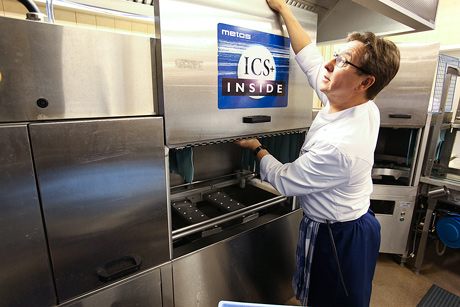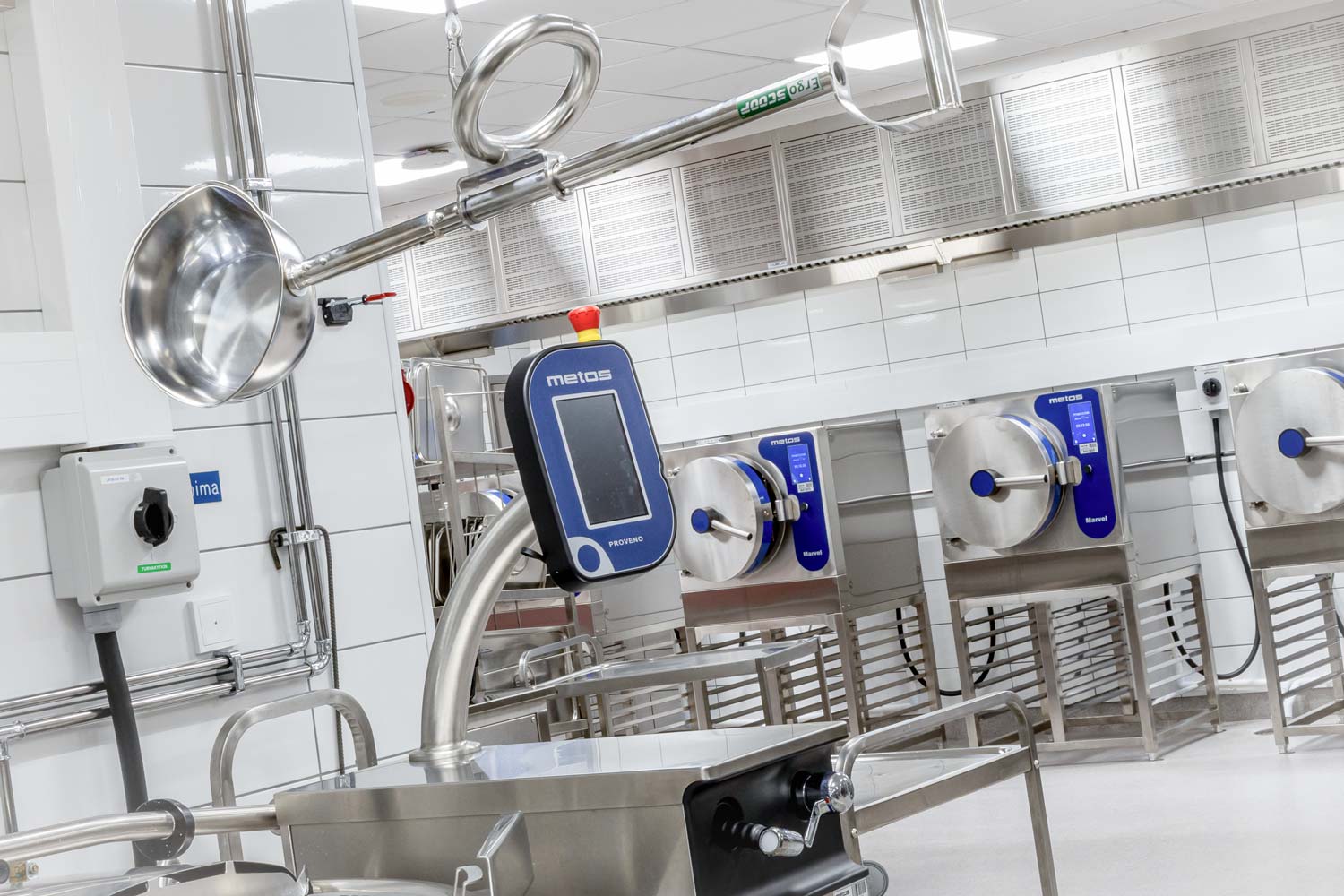Dishwasher cleaning – clean machine, clean dishes - Metos SE
Dishwasher cleaning – clean machine, clean dishes

A clean dishwasher is an important part of kitchen hygiene. Dishwashing is one of the most important and demanding aspects of a professional kitchen's daily operations. Dishwashing, with all its stages, plays a significant role in terms of investment in kitchen equipment, working time and environmental impact. One of the daily routines involved in dishwashing is cleaning the machine, an important detail that contributes to ensuring that the goal of clean dishes is achieved.
Only a clean machine can produce clean dishes that meet hygiene standards. The machine should be cleaned daily after work and during longer breaks, such as between lunch and dinner. For a concise information package on cleaning each type of machine, please refer to the instruction manual. Metos people are also happy to advise you.
In addition to dishwashers, detergents have also evolved in recent years to better meet the specific needs of kitchens. For the latest information on the most suitable detergents and equipment for cleaning your dishwasher, please contact your detergent supplier.
The choice of detergent is not a trivial matter. An unsuitable agent may react with the machine's own detergent, resulting in high levels of foam and a poorer cleaning result. In the worst case, the foam will prevent the machine from working and may even require a service visit to remove it.
Keep an eye on your dishwasher
An unpleasant smell in the dishwashing compartment could be caused by a badly cleaned washing machine. A quick look inside the machine will quickly tell you the status. For example, if you see red microbial growth on the curtains or the back of the doors of your washing machine, you really need to step up your cleaning!
The only downside of a badly cleaned machine is not poor washing results, but a clear impact on the cost of running the machine. Dirt can cause mechanical parts to jam and nozzles to clog, among other things.
The effects are often so gradual that they may not be noticed. A good example is the curtains of a corotating tunnel machine that have not been cleaned and are gradually losing their elasticity. Stiffened curtains allow water to move between the different sections, increasing water consumption. At the same time, of course, the consumption of detergent and heating energy also increases. The multiplier effects can therefore be considerable.
Key points on dishwasher cleaning
Please note that you should always check the specific instructions in each machine's manual for further details.
Hood dishwasher, daily cleaning:
- (switch off control power)
- Remove and clean the strainer plates
- Drain the basin by lifting/tilting/turning the overflow pipe
- Clean the overflow pipe and any drainage strainer
- Rinse the internal parts with a water jet
- On several models, you can use the P2 program to rinse the machine:
- Lower the hood and press P2
- The rinse takes about 30 seconds, after which you can lift the hood. Remember that the rinse programme is not a substitute for washing the machine
- Check that the wash and rinse nozzles are clean
- Wipe the exterior surfaces with a damp cleaning cloth
- Leave the hood up
Weekly also these:
- Clean the interior parts, use a detergent recommended by the detergent manufacturer and a suitable brush
- Detach and clean the wash arms
Tunnel machine, daily:
- (switch off the control power)
- Empty the basins
- Clean the garbage chutes with running water and a brush
- Clean the curtains with a suitable detergent and brush, rinse well and put back in place. Alternatively, you can machine wash the curtains individually at the end of the dishwashing cycle:
- Open the curtains on the dishwasher basket and run them through the machine under the dishwasher
- Put 1 to 2 curtains in the wash at a time and put in place -then wash the next ones. This prevents the water in the wash tanks from mixing too much.
- Clean the bottom plugs and overflow pipe, including the strainer basket for the final rinse
- Clean the internal surfaces of the machine and the basins with a water jet
- Rinse and check the cleanliness of the wash and rinse arms
- Clean the external surfaces of the machine with a damp cleaning cloth
- Leave the machine doors open
Weekly also these, or even daily if necessary:
- Remove the wash arms and wash them also inside with a brush (the brush is often supplied with the machine). Make sure that the sealing rings stay on the washers and do not get lost.
- Check the rinsing nozzles. You can open clogged nozzles with a water jet or, if necessary, a pin wrench
- Remove and clean the final rinse filter (2-3 times a week).
- Detach doors and clean the also the inside
- Also clean the seals inside the doors
Also remember:
- Dishwashing detergent for manual dishwashing can't be allowed in the dishwasher as it causes foaming and reduces the washing result. Please take this into account when soaking, pre-washing and cleaning the dishwasher.
- The condenser battery should be rinsed 1-2 times a year. It is advisable to have the cleaning carried out by technical staff.
- Descale as necessary. Your detergent supplier can help you choose the right descaler.
- Store the overflow pipe and the bottom plugs on the washing basket so that the seals do not collapse and lose their shape. Curtains are best kept in working order when they are put back in place after washing.
- When spraying floors, avoid splashing water on the electrical parts of the washing machine. It is a good idea to leave a "safety margin" of about one metre to prevent water from pooling under the machine and damaging the electrical parts.
- To facilitate cleaning of the internal parts of the machine and to improve working positions, rinsing sprayers with quick couplings are available.
Photo: Curtains can be cleaned by running them through a tunnel washer at the end of the day. To wash, remove only one or two curtains at a time and leave the other curtains in place. This prevents the water in the wash tanks from mixing with each other.
Photo. If necessary, use detergent. When cleaning the parts, do not use hand wash detergents, which cause foaming when they enter the washing machine.
Photo: The washing and rinsing arms are normally cleaned by with rinsing sprayer. A brush should be used for the final cleaning. Make sure that the sealing rings stay on the wash arms and do not break off.






